Edited 4/4/12 to add: I got a note from the biologist associated with this study, who gave me some background on the hawk pictured here. It’s a juvenile female who was tagged last August 2011 at SeaTac Airport. She — along with the other hawks who are trapped and tagged — was taken up to Skagit County where the habitat can support many Red-tailed Hawks and other raptors (lots of voles and other food sources, as well as open spaces). The photo I sent was the first report they’ve had of this hawk since they tagged her. And, apparently, another juvenile Red-tail tagged within days of her (Right, blue, #34) is also hanging out at this location … in case you happen to be there with your camera or scope.
———————
I ask this question because every time I see a bird marked with patagial tags on one or both wings, I can’t help but be struck by how large they often are in proportion to the bird’s natural wing. I photographed this Red-tailed Hawk a few days ago at Seattle’s Union Bay Natural Area. I believe the hawk pictured is part of a SeaTac Airport relocation study, where raptors are trapped and moved as a measure to reduce avian aircraft strikes.
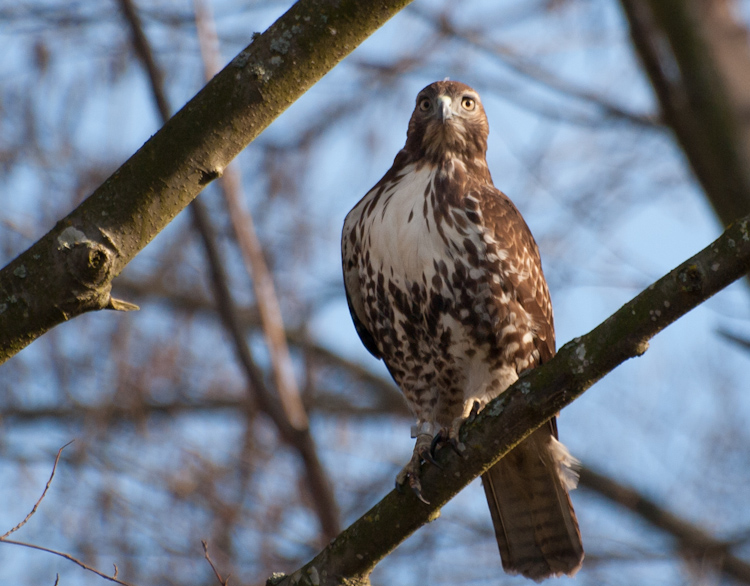
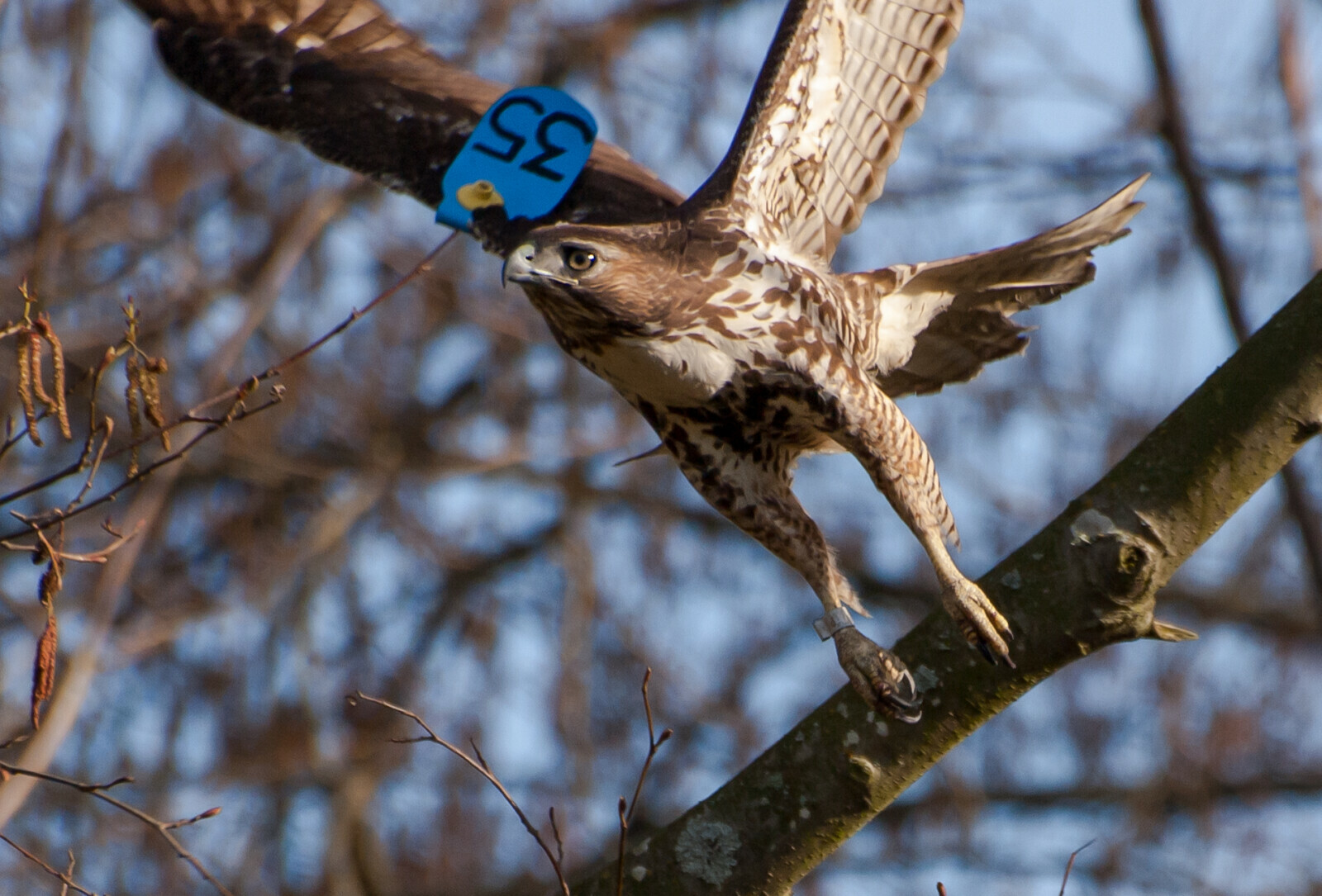
The wing tag pictured on this hawk doesn’t seem at all invasive compared to the huge, orange, double patagial tags on this Great Egret, captured on digital by a Flickr photographer. Click here for that image.
I’m not a biologist, so I make these comments without knowing the full benefit of each study in question. And, I understand why patagial tags are used — for easy visibility and tracking. It was impossible for me to miss this hawk’s blue tag, and thus easy for me to report the bird. (Of course, I was able to do the same recently with a crow who had color-coded leg bands and no wing tags.) I’ve also read that in some cases, such as with Turkey Vultures, leg bands are not practical or healthy because of the way vultures cool themselves by defecating on their own legs.
In other cases, however, I found abstracts which suggest that in some species, patagial tags do affect the behavior and well-being of the marked birds who spend more time preening because of the patagial tags. And this, in turn, affects how much time they devote to other important activities. A few study abstracts I came upon documented the negative effects of wing tags on Ruddy Ducks, Common Eiders, Adélie Penguins (flipper tags), and Carnaby’s Cockatoos. I found one documented case of a White Pelican that died because of tag entanglement, and I’ve heard a few anecdotal accounts from people who’ve seen tags that seemed to cause distraction and preening in the birds they observed.
Personally, I find it difficult to look at a marking that so drastically alters the appearance of a bird, as in the case of this Great Egret I mentioned earlier. The crude, anti-collision orange markers on the egret seem obscene in any context — and the photographer who captured that image suggests the same. In terms of visibility, even if patagial markers are needed for critical studies, it seems the tags could be a fraction of the size worn by the hawk I photographed — and still be easily visible with binoculars, a scope or a telephoto lens. Actually, even a point-and-shoot with a reasonable zoom could focus in on a tag not nearly this large.
How do you feel when you come upon birds with large single or double wing tags? Does it bother you at all, or do you feel the benefits outweigh the negatives?

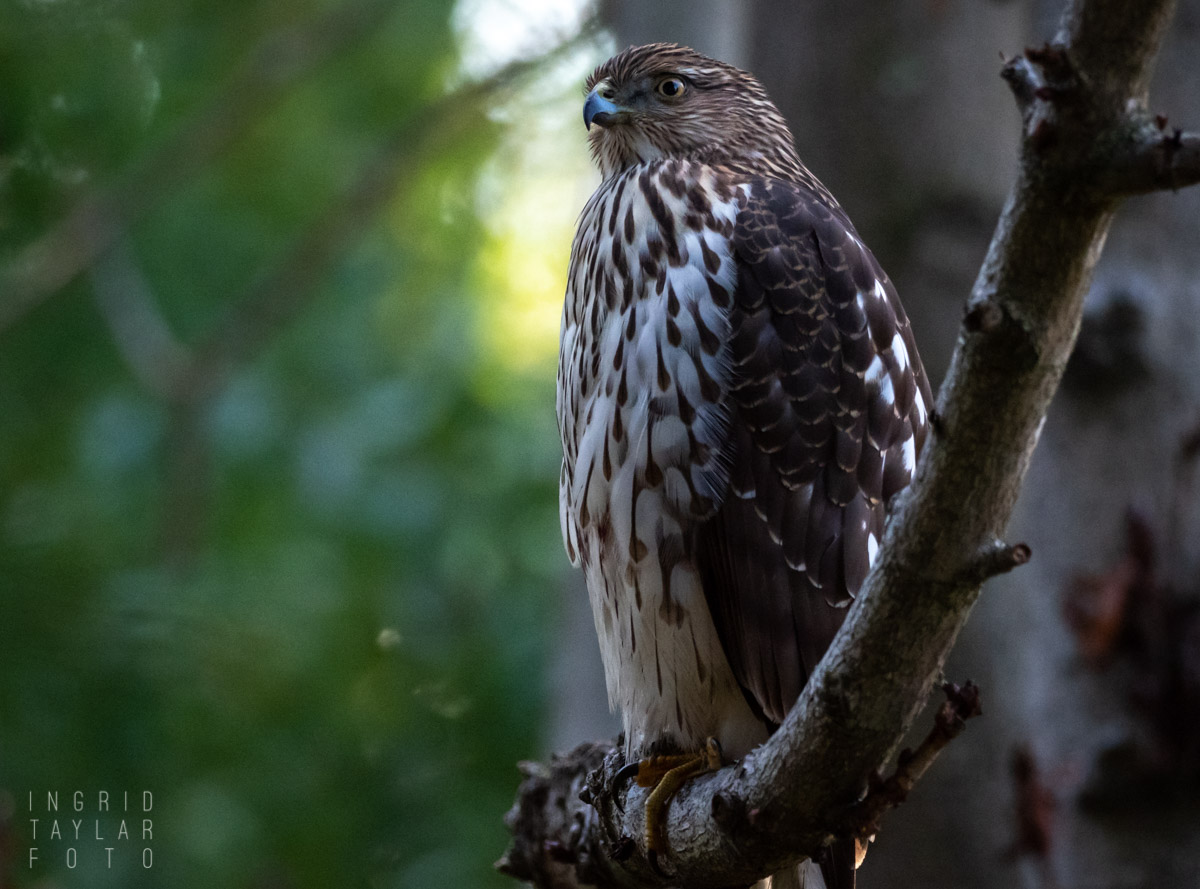
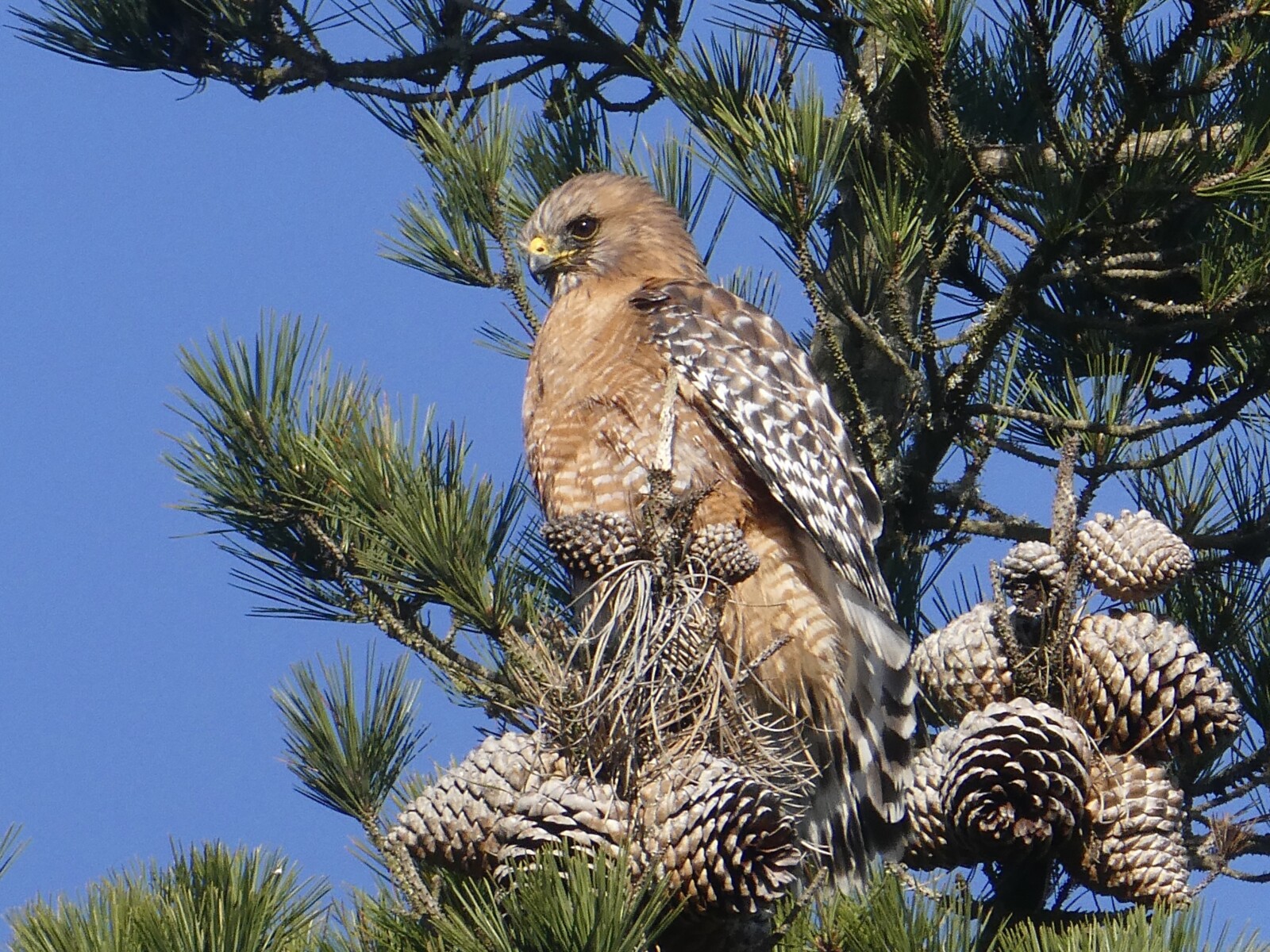
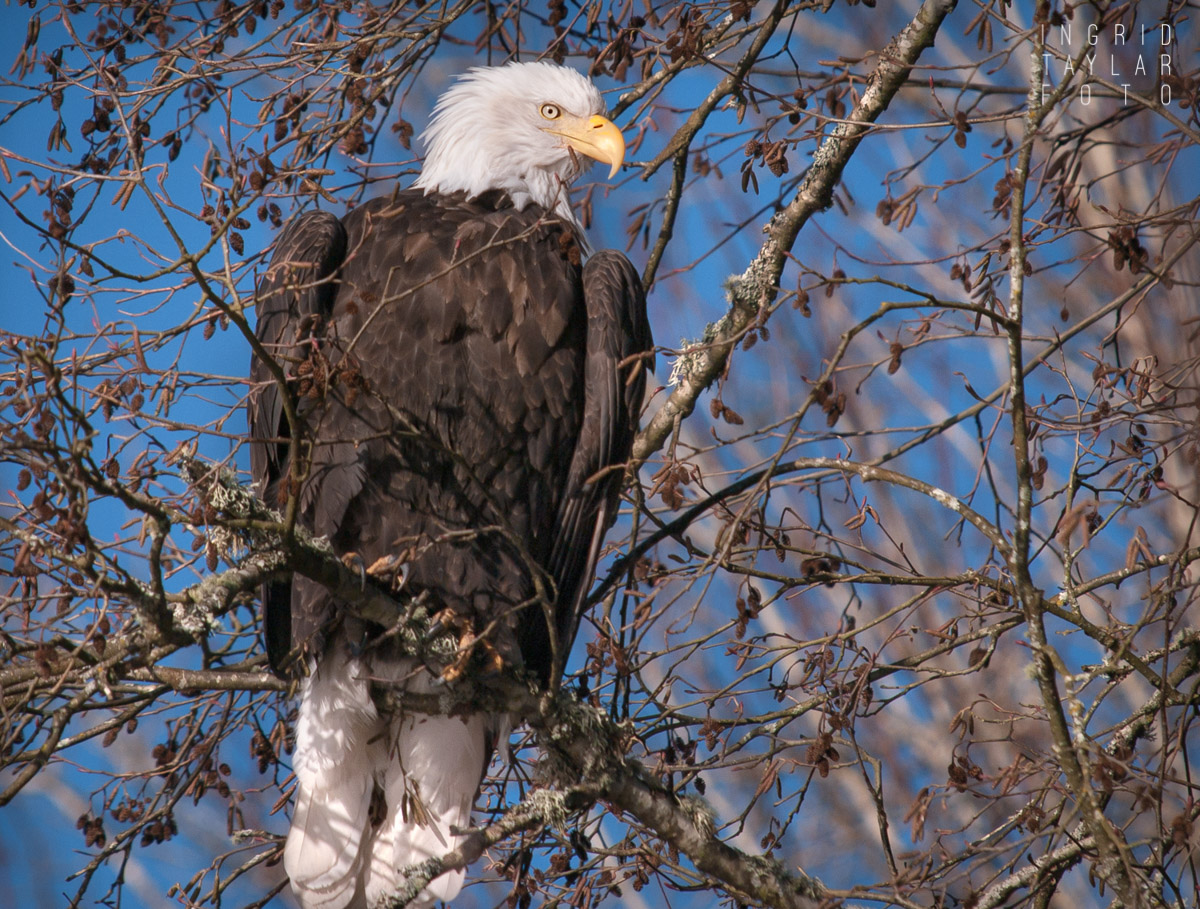
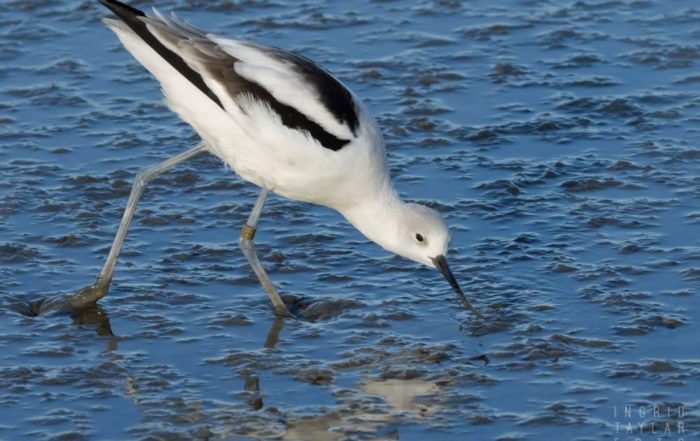
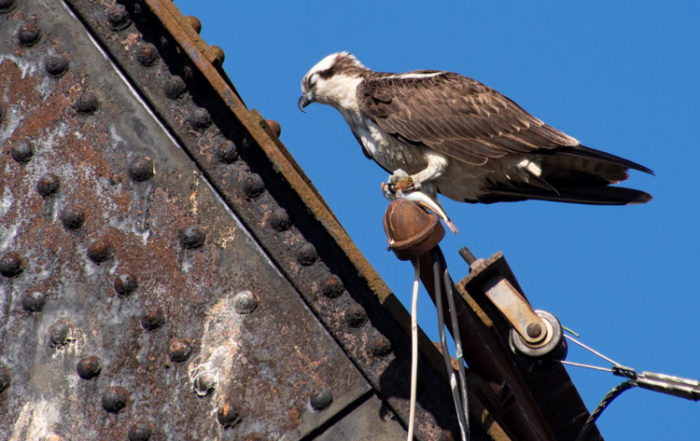
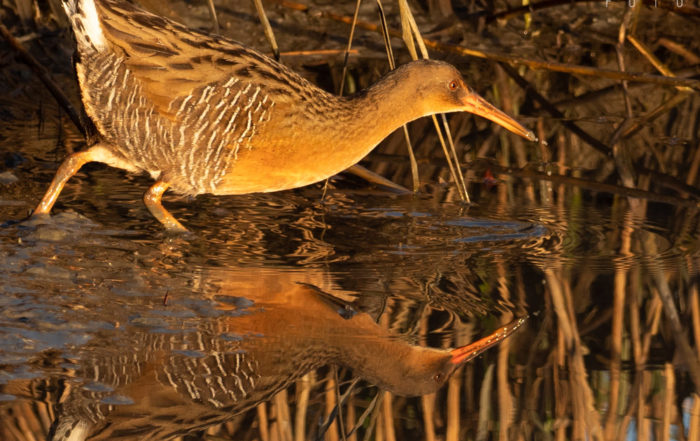
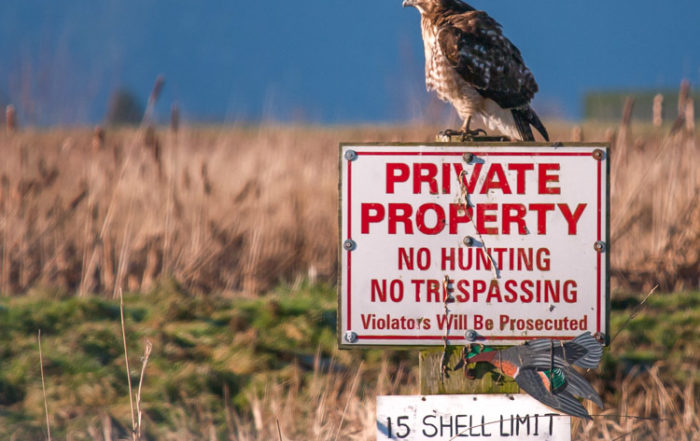
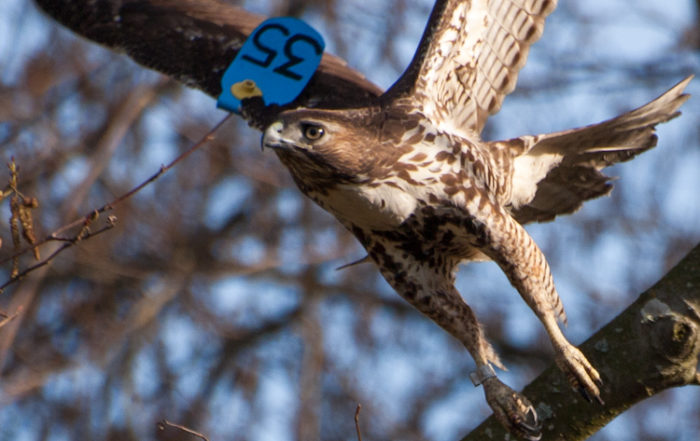
It makes me want to scream. Color coded VID leg bands would work just as well.
Every time I look at a photo with such a tagged bird, I admit my heart sinks. I’ve reported leg-banded birds, where the study had long since ceased, sometimes a graduate student project. If I’m not mistaken, birds will wear these huge tags for their entire lives (unless the rivet fails). I’m not a big fan of ends-justifying-the-means reasoning, and I can’t help but consider the well-being of the individual birds in the context of the greater outcome. It’s one thing, say, in condor studies, where you know a tiny number of birds will be monitored throughout their lives for such a critical end. This hawk was ostensibly tagged this way to track its movements vis-a-vis SeaTac Airport. There just has to be a better way … as you say, VID leg bands.
Hi Ingrid I live near Sea Tac and I just seen a hawk in our backyard with a blue tag and I thought I would check it out online and your post of two years ago mentioned such a bird in this area. So just commenting on seeing it.
Ingrid, while I understand the importance of the information gathered from studies where birds are banded or tagged, I find the tags on that Egret to be enormous and believe that smaller tags would have been more appropriate and possibly less cumbersome for the bird. As for the hawk, leg bands probably would have been just as effective, any one with a scope or zoom/long lens could see it.
The sizing of those tags is what bothers me the most. I simply don’t understand the need for it. I did some Googling when I first saw that egret shot, and at one board, a biologist in Scotland said he preferred the large tags because it allowed for public participation — where people could identify the birds with the naked eye and thus be more invested in the study. Of course, that’s just one person’s take, but I find that to be a very thin rationale for the cumbersome nature of the patagial markings.
For the record, I did take the image of the egret mentioned in your blog. In this pond were a total of 13 tagged birds. Unfortunately, one of them got a tag hung up in a tree branch and hung itself…. All in the interest of science.
Earl
Earl, that is devastating to hear and inexcusable. No matter what data is gathered from these studies, I cannot reconcile myself to the patagial tags you documented. My sentiments are similar to what Mia wrote above. The rationale given is that they can be easily seen and reported, but this outcome tends to disregard the very types of issues you encountered … the well-being of the bird being the primary consideration. The fact that these tags alter the bird’s appearance so dramatically and, in some cases, significantly impair or harm is beyond distressing. Thank you for commenting here, and for sharing those images, difficult as they are to witness.